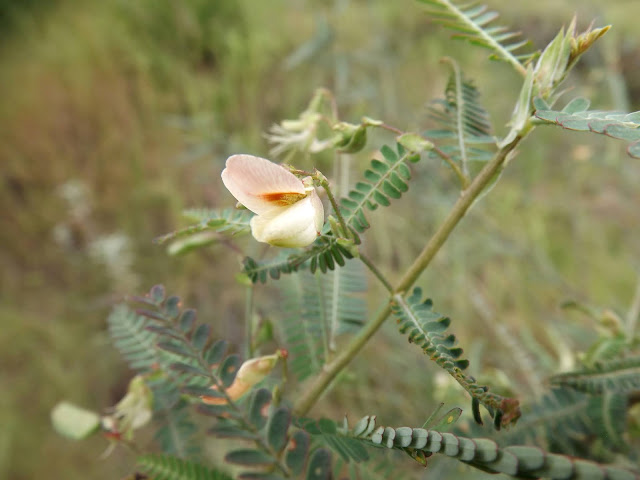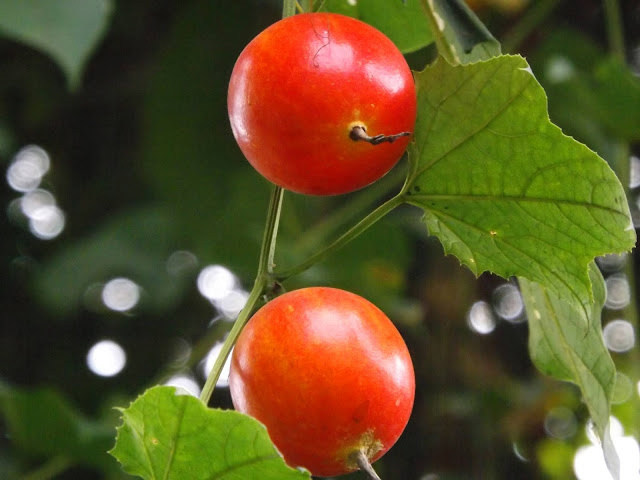Kath-shola or Budda pea, Aeschynomene indica
Kath-shola or Budda pea (Aeschynomene indica, Family: Fabaceae) is a woddy annual or perennial erect undershrub with some narrow and slender branches and sensative leaves, attaining a height of 1 to 1.5 m. Stem is corky, greenish and glabrous. It loves to grow near the water bodies and in ditches, fallow lands and muddy soil in Bangladesh. It is also found throughout Asia.
Other names: Shola (Bang); Indian jointvetch (Eng).
Leaves are light green, compound, bipinnate; blades 40-60, tiny, linear-oblong, alternate, petiole short, no veins except the midrib. In the absence of sunlight, the leaves curl up like most other members of Fabaceae.
Flowering occurs in rainy season. These are in axillary raceme, 2-4, tiny, reddish yellow, 1-1.5 cm long. Sepals 5 with connecting 2-lipped calyx. Upper part of the calyx is entire, lower entire or 3-lobed. Corolla caducous, two times larger than calyx. Peduncle and pedicel are glutinous and slightly hairy.
Fruit is legume, linear, smooth or slightly hairy, 4-5 cm long, section 5-9, containing a seed in each. Seeds are tiny, curved and compressed. The plant is propagated by cuttings and seeds. Flowers and fruits can be seen together in the same plant.
Different types of ornamental materials are made from its stem for the marriage ceremony of Hindu community. Traditional toys are made from it also. Charcoal is obtained from its stem. As a medicinal plant its eaves, stem and bark are used in birth control, urinary disorder, kidney disease etc.
Synonyms: Aeschynomene cachemiriana, Aeschynomene diffusa, Aeschynomene evenia, Aeschynomene glaberrima, Aeschynomene indica var. punctata, Aeschynomene indica var. viscosa, Aeschynomene kashmiriana, Aeschynomene macropoda, Aeschynomene montana, Aeschynomene oligantha, Aeschynomene pumila, Aeschynomene punctata, Aeschynomene quadrata, Aeschynomene quadrata, Aeschynomene richardiana, Aeschynomene roxburghii , Aeschynomene subviscosa, Aeschynomene virginica,Aeschynomene viscidula, Hedysarum alpinum, Hedysarum neli-tali, Hedysarum virginicum, Smithia aspera.








Comments
Post a Comment